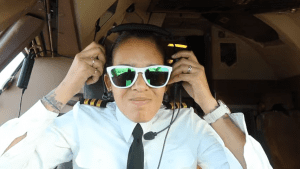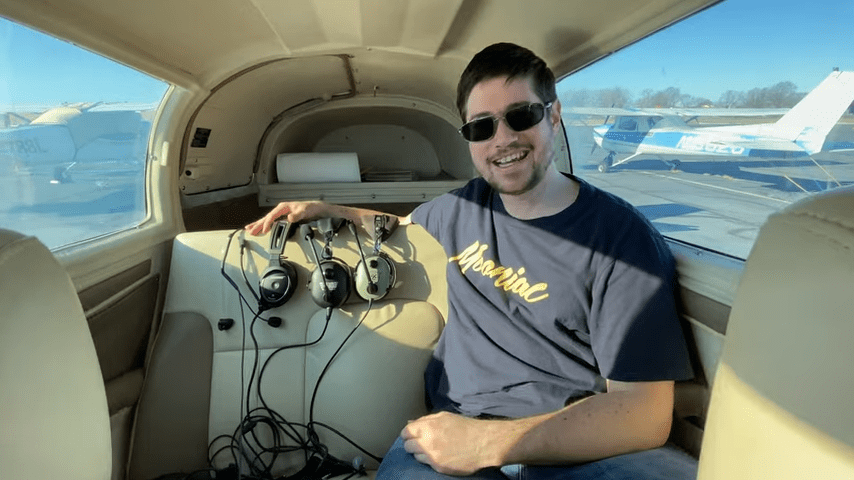Table of Contents
In the dynamic world of airport operations, noise permeates the air, presenting a constant challenge for those working on the tarmac. For aircraft technicians, maintenance personnel, and ground crews, the risk of job-related hearing loss is an ever-present concern.
With the thunderous roar of jet engines unleashing a formidable 120 to 150 decibels of noise, the need for top-tier hearing protection among airport professionals becomes paramount.

While traditional passive earmuffs have made strides in reducing mid- and high-frequency noise, they have fallen short when it comes to effectively combating the distinctive low-frequency component of aircraft engine noise. Enter a groundbreaking solution that has captivated the attention of the aviation industry.
Mitigating the Physiological and Psychological Effects of High Noise Exposure on Aviation Crew
Aviation crew members play a vital role in ensuring the safety and smooth operation of flights. However, their work environment exposes them to significant levels of noise, which can have both physiological and psychological effects on their well-being. Recognizing and addressing these effects is crucial to maintaining crew performance, productivity, and overall job satisfaction.
Physiologically, prolonged exposure to high noise levels can lead to various health issues. Fatigue, stress, and elevated blood pressure are common consequences that can compromise crew members’ physical well-being. The constant barrage of noise can disrupt sleep patterns, leading to sleep disturbances and reduced restfulness. The cumulative effect of these physiological disruptions can impact crew members’ alertness, cognitive function, and decision-making abilities, posing potential risks to flight safety.
In addition to physiological effects, high noise exposure can also have psychological ramifications. Crew members may experience increased levels of anxiety, irritability, and difficulty concentrating due to the constant noise bombardment. The elevated stress levels can diminish job satisfaction and overall mental well-being. Furthermore, the strain of coping with high noise levels can contribute to feelings of frustration, which may negatively impact crew cohesion and communication.
Mitigating these physiological and psychological effects of high noise exposure is essential to ensure the optimal performance and well-being of aviation crew members. By reducing the excessive noise, aviation crew members can experience improved concentration, enhanced cognitive performance, and reduced stress levels. Restful sleep and reduced fatigue contribute to better overall health and well-being.
Implementing effective hearing protection measures, such as the use of specialized aviation-grade earmuffs or noise-cancelling headphones, can significantly reduce noise levels reaching the crew’s ears. These advanced technologies not only provide adequate hearing protection but also help create a quieter and more comfortable working environment.
Active Noise Cancellation Technology for Ground Crews: Revolutionizing Hearing Protection
Active Noise Cancellation (ANC) technology is a revolutionary advancement in hearing protection specifically designed to address the challenges faced by aircraft technicians, maintenance personnel, and ground crews. By utilizing advanced algorithms and intelligent sound processing, ANC actively counters and neutralizes the harmful noise generated by aircraft engines, providing unparalleled auditory well-being.
Unlike conventional passive earmuffs, which struggle to effectively combat the low-frequency component of aircraft engine noise, ANC technology takes hearing protection to a new level. It dynamically adjusts sound waves to create anti-noise that cancels out the intrusive and hazardous frequencies. This results in a significant reduction in noise exposure, mitigating the risks of job-related hearing loss and promoting the overall safety and health of ground crews.
With ANC technology, the detrimental effects of prolonged exposure to deafening noise levels are no longer a concern. The technology acts as a shield, preserving the auditory health of aircraft technicians, maintenance personnel, and ground crews. This allows them to perform critical tasks with enhanced precision, clarity, and concentration.
The introduction of ANC technology signifies a new era in hearing protection for ground crews, recognizing their invaluable contributions and prioritizing their safety. This innovative solution not only revolutionizes the way we address noise-related risks but also sets a new standard for the well-being and protection of those who work tirelessly on the ground.
What Ear Defenders are Used for Hearing Protection of the Crew?
What Ear Defenders are Used for Hearing Protection of the Crew?
When it comes to hearing protection for aviation crew members, a range of ear defenders is employed to mitigate the impact of high noise exposure. These ear defenders are specifically designed to provide effective noise reduction while ensuring optimal comfort and functionality.
One commonly utilized technology in ear defenders is Active Noise Reduction (ANR). ANR technology employs sophisticated electronic circuitry to analyze incoming sound waves and generate an equal and opposite sound wave, effectively canceling out the noise. This active noise cancellation feature significantly reduces the amount of noise reaching the wearer’s ears, offering enhanced hearing protection in noisy environments. ANR ear defenders are particularly effective at attenuating low-frequency noise, such as the rumble of aircraft engines, which can be challenging to address with passive methods alone.
In addition to ANR technology, other types of ear defenders used for hearing protection of the crew include passive noise reduction earmuffs and foam earplugs. Passive earmuffs are constructed with sound-absorbing materials and cushioning to provide a physical barrier between the ears and the external noise. These earmuffs can attenuate a broad range of frequencies and are relatively straightforward to use and maintain.
Foam earplugs, on the other hand, are inserted into the ear canal, creating a seal that blocks out noise. They are portable, disposable, and offer a convenient solution for crew members who prefer a more lightweight and unobtrusive option. Foam earplugs are often made of soft, pliable materials that conform to the shape of the ear canal, providing a snug fit and effective noise reduction.
Criteria for Selecting Cutting-Edge Ear Defenders for Aviation Crews
When choosing ear defenders for aviation crew members, several criteria should be considered to ensure optimal hearing protection and compatibility with their work environment. These criteria include:
- Noise Reduction Rating (NRR): The NRR indicates the level of noise reduction provided by the ear defenders. It is important to select ear defenders with a high NRR to effectively attenuate the noise levels encountered during aviation operations.
- Comfort and Fit: Ear defenders should be comfortable to wear for extended periods without causing discomfort or pressure points. They should have adjustable features, such as headbands or ear cups, to provide a secure and customized fit for individual crew members.
- Compatibility with Safety Equipment: The ear defenders should not interfere with the proper wearing of other necessary safety equipment, such as helmets, goggles, or communication devices. They should be designed to integrate seamlessly with existing aviation safety gear.
- Communication Compatibility: In aviation, effective communication is crucial for crew coordination and safety. Ear defenders should not hinder communication systems, such as radios or intercoms, and should allow for clear and intelligible communication while providing adequate noise reduction.
- Durability and Maintenance: Aviation crew members often work in demanding environments, so ear defenders should be robust, resistant to impact, and capable of withstanding harsh conditions. They should be easy to clean and maintain to ensure their long-term effectiveness.
- Compliance with Regulations: Ear defenders should meet industry standards and comply with relevant regulations, such as those set by aviation authorities, to ensure their safety and efficacy.
- User Preferences: Each crew member may have personal preferences regarding the type of ear defenders they find most comfortable and suitable for their needs. Considering individual preferences can enhance overall satisfaction and compliance with wearing the ear defenders consistently.
By considering these criteria, aviation crew members can make informed decisions when selecting ear defenders, ultimately providing them with reliable and effective hearing protection throughout their demanding work activities.
